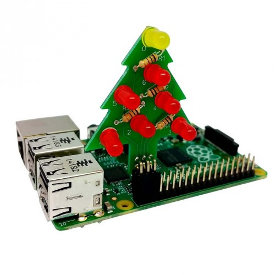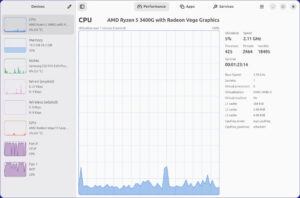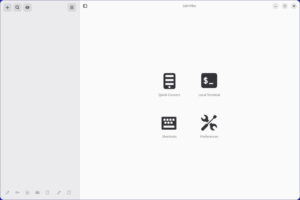The Raspberry Pi Report
Some of you might have received a Raspberry Pi for Christmas or know of a family member or friend who received one. While some of us know exactly what to do with the devices and what peripherals to buy, that does not hold true for a majority of non-technical people. This article, focused on the Raspberry Pi 2 B, will help serve as a guide to answer questions you or someone you know might have.
 What equipment do I need? If you did give or receive a Raspberry for Christmas, hopefully it was part of a kit where all the necessary parts are included. If not, you may be asking what you need to get started. First you will need a microSD card with your operating system of choice installed. Next, a USB supported keyboard and mouse, as well as a HDMI cable. If the monitor you intend to use does not support HDMI, then a proper adapter will be necessary. Finally, a micro USB power supply will be needed to power your new device.
What equipment do I need? If you did give or receive a Raspberry for Christmas, hopefully it was part of a kit where all the necessary parts are included. If not, you may be asking what you need to get started. First you will need a microSD card with your operating system of choice installed. Next, a USB supported keyboard and mouse, as well as a HDMI cable. If the monitor you intend to use does not support HDMI, then a proper adapter will be necessary. Finally, a micro USB power supply will be needed to power your new device.
All of these listed peripherals are needed for the initial setup and configuration of the device. After setup, you may choose to SSH into the your device or use a battery pack, in which case some of the above listed components will not be necessary
Where can I purchase equipment? Most retail stores, such as Micro Center, carry the necessary peripherals. If you want to keep your shopping online, I recommend that you check Pimoroni or The Raspberry Pi Shop.
What do I do with it? So you got the device all hooked, installed and…what now? A good place to turn for ideas is The MagPi Magazine. Every issue is full of ideas and projects for what you can do with your new device. Not only is every MagPi issue worth its weight in gold, they also publish the Official Raspberry Pi Project Book with over 200 pages of project ideas and tutorials. Also read the Raspberry Pi Pod, created and maintained by Michael Horne, which constantly posts projects by novices and masters alike.
Where do I go for help? So you picked out your project and now a piece of code isn’t compiling or a wire isn’t hooked up to the right pin and you need some help? No worries, because the Raspberry Pi community is there to assist you. There are numerous places to turn for help. The Forums section on the Raspberry Pi website has several categories for those seeking help. The Raspberry Pi Exchange is an excellent place to post questions and look up answers to some of the most common problems users are having. Another great site for both ideas and help is RasPi.TV, which is run by Alex Eames, one of the most trusted names in the Raspberry Pi community.
Hopefully this article will help you, or someone you know, get up and running with the Raspberry Pi. The resources I mentioned are just the tip of the iceberg. To keep up with the latest in the community, check out Pi Weekly or The Pi Podcast where — truth in advertising — I’m a co-host. Also, you can follow the blog on the Raspberry Pi site.
Please post in the comments any resources I might have missed that you think are worth mentioning.
Help keep FOSS Force strong. If you like this article, become a subscriber.
In addition to hosting a Raspberry Pi meetup in Washington D.C., Isaac Carter is a co-host on mintCast. He’s also a software engineer who enjoys working with Java, JavaScript, and GNU/Linux. When he’s not coding, you can find him reading on any number of subjects or on the golf course.







Hi Isaac,
Here are a couple of shamelessly suggested resources. These are all books that you can download for free (or donate if you really want to) from Leanpub;
Raspberry Pi: Measure, Record, Explore (https://leanpub.com/RPiMRE)
Just Enough Raspberry Pi (https://leanpub.com/jerpi)
Just Enough ownCloud on a Raspberry Pi https://leanpub.com/jeocrpi)
Just Enough Ghost on a Raspberry Pi (https://leanpub.com/jeghost)
Good pointers for a Raspberry Pi starter.